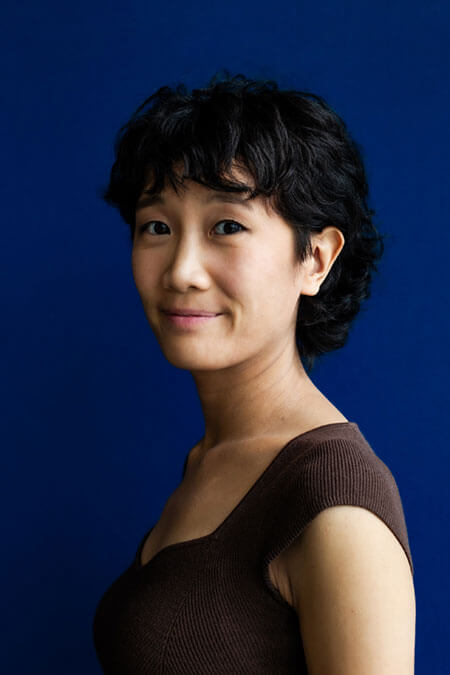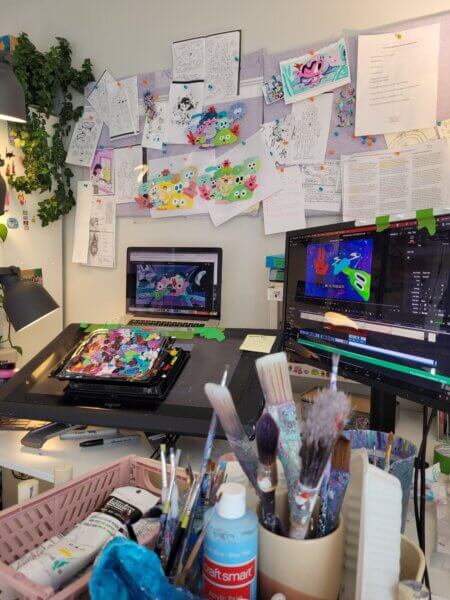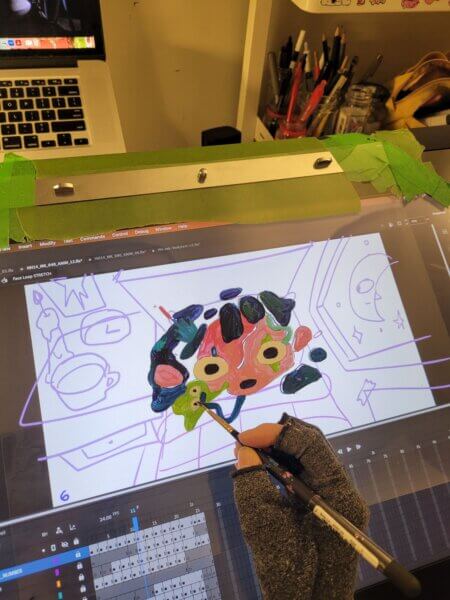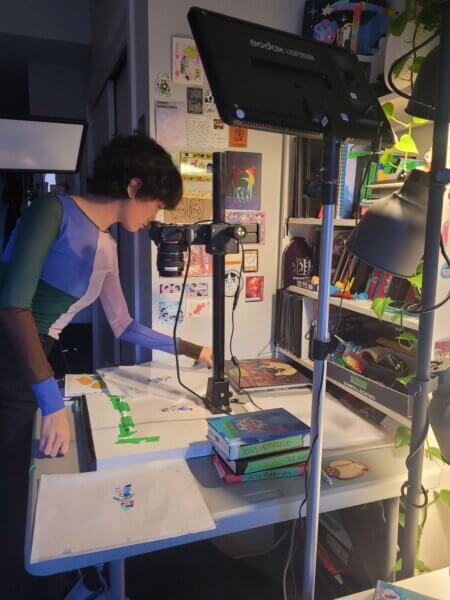Unblending
What is the film about?
Produced as part of the 14th edition of Hothouse.
For people living with structural dissociation, falling asleep can be a challenge—a time when multiple contradictory thoughts conspire to keep you awake. Drawing on her experience with somatic healing, Michelle Ku puts these thoughts to rest in a few vivid minutes of hand-painted animation.
What influenced it?

Michelle Ku (Photo: Fannie-Laurence Dubé-Dupuis, courtesy of NFB)
One of the main influences for my film is Internal Family Systems parts therapy. It’s the idea that we all have different parts to ourselves and our personalities, and that there are ‘no bad parts,’ meaning each one developed to serve a purpose and help us survive whatever was going on at the time. This film was an opportunity for me to explore the different parts of myself. How do these parts change, move, sound and manifest within the body? For the sound direction, I was inspired by 1990s video-game music and sound effects.
A little background information...
The film is an extension of my Mind Body series of paintings, which I’ve been working on since 2022. It’s inspired by the healing journey I’ve been on over the last seven years. When I was five years old, I was misdiagnosed with eczema by my doctor, and for the next 21 years my skin became addicted to and extremely damaged by steroid creams. Realizing this as an adult, I took my health into my own hands and decided to withdraw. I went through topical steroid withdrawal (TSW), a painful process both physically and mentally. It’s taken over five years for me to heal to a ‘normal-ish’ state, but I still have regressions.
Through this whole thing, I learned to take care of myself again and also started going to therapy, discovering that I have complex PTSD (c-PTSD) from childhood trauma. I wanted to make this film to let people know they’re not alone if they struggle with chronic health issues (both mental and physical). I also wanted to honour the needs of all my parts, even the ones considered smaller and less important for daily functioning. I feel like I can express these thoughts better through animation, while leaving room for people’s own unique interpretations.
How was the film made?
I first animated everything digitally in Adobe Animate, drawing on a Cintiq. I taped an animation peg bar to the top of the Cintiq and layered my cels on top, so I could see the digital sketch underneath. I numbered each cel to match the frame number in the digital animation and started directly painting on top. It was really weird at first, it felt kind of illegal—like I was painting right onto the computer screen, but I eventually got used to it. It was important to make sure the zoom size of the screen and position was consistent, so that it’d be the same when I photographed the cels back in. I photographed the cels in Dragonframe with a rostrum stand, then composited everything in After Effects, adjusting the colours to match the original paintings as closely as possible. Some scenes have multiple layers of cels while others have everything painted on one layer of cel. It got tricky as I added more layers because there were more reflections and inconsistencies, and I had to make sure the layers were laid as flat as possible to minimize reflection.
The film had to be made over three months, so I also set certain limitations to make sure I could complete everything on time. This included keeping the style of the painting quite loose, partially because I enjoy this way of working, but also because I didn’t want to worry about painting ‘backwards’ on cels as is traditionally done, to get a smooth and consistent texture. I really wanted to emphasize all the texture and colour variations that come with painting, and to explore how that’d look in movement.





